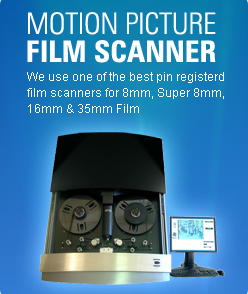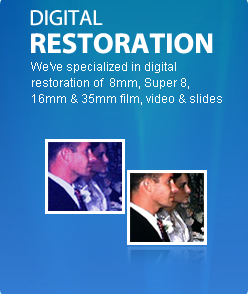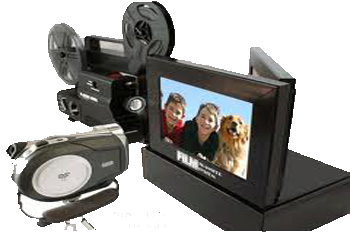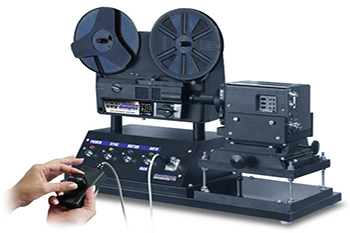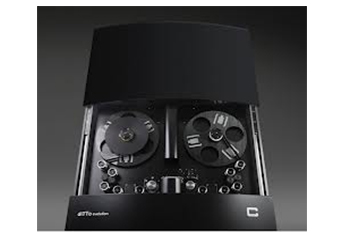
Film Conversion Equipment
Film Scanning and Film Transfer Equipment Types
The type of film scanning machine used for your 8mm, Super 8 or 16mm film conversion will have as much of an impact on the quality you receive as the resolution of the scan itself will. For example, if you wanted to digitize a photograph and tried doing it two different ways. You first put the photograph down on a table and took a picture of it using your smart phone or camera. Then you took the picture and scanned it using a flatbed scanner. If you compare the two side by side on your computer it will become really obvious that the flatbed scanner produced a digital image as good as the photograph. However, the picture you took with your phone or camera does not look close to the quality of the original photograph.
The same goes for scanning your 8mm, Super 8 or 16mm film. The real-time and frame by frame machines below are using a camcorder to take a picture of your film. The motion picture film scanner and Datacine machine are scanning the film. The results will be significantly different.
Film Conversion Equipment |
|
Real Time
|
|
Frame by Frame
|
|
Professional Film Scanners
|
|
Equally important as resolution is the type of film transfer. There are a few basic types of film transfer processes. More than 80% of the companies out there today use a real-time transfer. Any type of real-time film transfer will result in video that is 40-50% worse than the film’s current condition.
So, at this point you’ve learned that film transfers can capture at standard definition (480 lines), high definition (1080 lines) or 2K (1556 lines). You’ve also learned about the 3 different types of film transfers being used today. In order from least to best quality we have:
The film transfer processes above are the basics types and do not include any restoration by themselves. Restoration comes in many different capabilities from color and exposure correction, to grain elimination, to stabilization
Lafayette Fun Facts: Lafayette resides in an area called Acadiana, which is known as the Cajun Heartland, and is the unofficial Cajun Capitol of the south. Lafayette lies 15 miles west of the Atchafalaya Basin and 35 miles north of the Gulf of Mexico and is surrounded by bayous, swamps and marshes along with forests and prairies. The city got its name in 1844 when it was named after the French Marquis de Lafayette. Lafayette has a history almost as colorful as the history of the state of Louisiana, which actually was governed by 10 different flags from the period of time beginning 1541 until 1803 when it became a possession of the United States.
Louisiana Fun Facts: Louisiana sits above the Gulf of Mexico at the mouth of the Mississippi River, bordered by Arkansas to the north, Mississippi to the east and Texas to the west. Originally colonized by the French during the 18th century, it became U.S. territory as part of the historic Louisiana Purchase in 1803, and was admitted to the union in 1812. Louisiana’s capital city is Baton Rouge.
